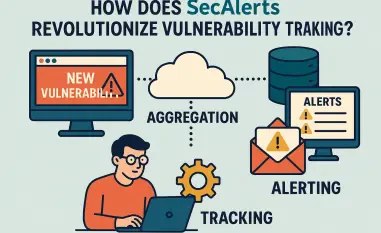In a world where digital deception can unravel national security, consider the chilling scenario of a single email, seemingly from a trusted embassy, infiltrating an entire government network with devastating precision, a tactic expertly wielded by MuddyWater, an Iranian-linked cyber espionage group. This is no mere hypothesis but a stark reality, as they have struck over 100 organizations across the Middle East and North Africa. With a focus on diplomatic missions and foreign affairs ministries, their latest campaign exposes the vulnerability of high-stakes targets, drawing global attention to the shadowy art of cyber warfare.
The significance of this threat cannot be overstated. MuddyWater, tied to Iran’s Ministry of Intelligence and Security, has honed its craft since at least 2017, targeting entities that shape geopolitical landscapes. Their operations, often aimed at gathering critical intelligence, reflect broader regional tensions, making it imperative for governments and organizations worldwide to grasp the depth of this menace. This narrative delves into the intricate tactics of a group that thrives on blending sophistication with deception, revealing why their actions demand urgent scrutiny.
Exposing a Silent Predator: MuddyWater’s Campaign Unveiled
At the heart of MuddyWater’s latest operation lies a meticulously planned assault on trust. By compromising legitimate email accounts and using services like NordVPN to mask their origins, the group sends phishing emails disguised as official diplomatic correspondence. These messages, often targeting embassies and consulates, trick recipients into opening malicious attachments, setting the stage for deeper infiltration.
What makes this campaign particularly alarming is its scale and focus. Over 100 organizations, with more than three-fourths being government-related entities, have fallen into the crosshairs. The deliberate selection of such sensitive targets underscores a strategic intent to harvest intelligence that could influence political and diplomatic outcomes in the Middle East and North Africa, amplifying the urgency for robust countermeasures.
Geopolitical Targets: The High Stakes of MuddyWater’s Focus
The choice of victims in MuddyWater’s operations reveals a calculated alignment with geopolitical interests. Government bodies, including foreign affairs ministries and international organizations, bear the brunt of these attacks, alongside key telecommunications firms. This pattern suggests a clear motive: to access information that could sway regional power dynamics or support state-sponsored objectives.
Such targeting is not random but deeply tied to the group’s alleged backing by Iran’s intelligence apparatus. Active for several years, their persistence highlights a long-term commitment to espionage that transcends mere data theft, aiming instead for strategic leverage. For nations and sectors in the crosshairs, the implications are profound, as compromised data could reshape diplomatic relations or expose critical vulnerabilities.
Inside the Toolkit: Decoding MuddyWater’s Methods
MuddyWater’s success stems from a deadly combination of psychological manipulation and technical ingenuity. Their primary weapon, phishing, leverages the trust in diplomatic communications to deliver malicious Microsoft Word documents. Once opened, these files prompt users to enable macros, unleashing Visual Basic for Applications code that installs backdoors like Phoenix v4, a lightweight yet potent malware.
Beyond social engineering, the group’s arsenal includes custom tools and repurposed legitimate software. The Phoenix backdoor, paired with loaders like FakeUpdate, enables system reconnaissance, file transfers, and persistent access. Meanwhile, commercial tools such as PDQ and Action1 are exploited to blend into routine network activity, alongside bespoke credential stealers targeting browsers like Google Chrome, showcasing a layered approach to evasion.
A closer look at their command-and-control infrastructure reveals further sophistication. Hosting remote monitoring tools and custom malware on their servers, MuddyWater ensures sustained control over compromised systems. This blend of innovation and mimicry, seen in their targeting of high-profile entities, illustrates a strategy designed to operate undetected for extended periods, posing a formidable challenge to defenders.
Analyst Perspectives: Tracking MuddyWater’s Sophistication
Cybersecurity experts have closely monitored the evolution of MuddyWater, noting a marked increase in their operational complexity. According to Group-IB analysts, the group’s adaptability shines through in malware variants like Phoenix v4, engineered to bypass modern security protocols. Their persistent use of phishing as an entry point remains a hallmark, exploiting human error with alarming consistency.
One researcher captured the essence of the challenge, stating, “MuddyWater’s integration of custom malware with legitimate tools creates a detection nightmare for security teams.” This insight reflects a broader consensus on the group’s ability to evolve, seen in historical aliases like Boggy Serpens and Mango Sandstorm. Their long-standing patterns of deception, paired with technical advancements, cement their status as a relentless threat in the espionage domain.
Building Defenses: Strategies to Counter MuddyWater
Facing a threat as cunning as MuddyWater requires proactive and tailored defenses. Organizations, especially in high-risk sectors like government and telecommunications, must prioritize email security through advanced filtering and authentication measures such as DMARC. These protocols can intercept phishing attempts masquerading as trusted communications before they reach unsuspecting users.
Employee training forms another critical pillar of protection. Staff must be equipped to spot suspicious emails, particularly those urging macro activation in attachments—a signature tactic of this group. Regular awareness programs can significantly reduce the likelihood of successful social engineering attacks, fortifying the human element of cybersecurity.
Finally, continuous monitoring and system maintenance are essential. Endpoint detection tools can flag anomalies indicative of backdoors like Phoenix or misuse of legitimate software. Coupled with timely patching of vulnerabilities, these steps create a resilient framework to mitigate the risks posed by sophisticated actors, ensuring that potential breaches are identified and addressed swiftly.
Reflecting on the Threat: Lessons from MuddyWater’s Campaign
Looking back, MuddyWater’s extensive campaign serves as a stark reminder of the fragility of digital trust within critical sectors. Their ability to exploit both human psychology and technical loopholes exposed gaps in global cybersecurity that demand immediate attention. Each targeted entity, from embassies to telecom firms, bore witness to the devastating potential of state-backed espionage.
The path forward rests on a commitment to vigilance and collaboration. Nations and organizations must invest in cutting-edge defenses while sharing intelligence to anticipate and neutralize similar threats. By fostering a culture of preparedness and innovation, the global community aims to stay one step ahead of actors like MuddyWater, safeguarding sensitive information against the ever-evolving landscape of cyber warfare.













